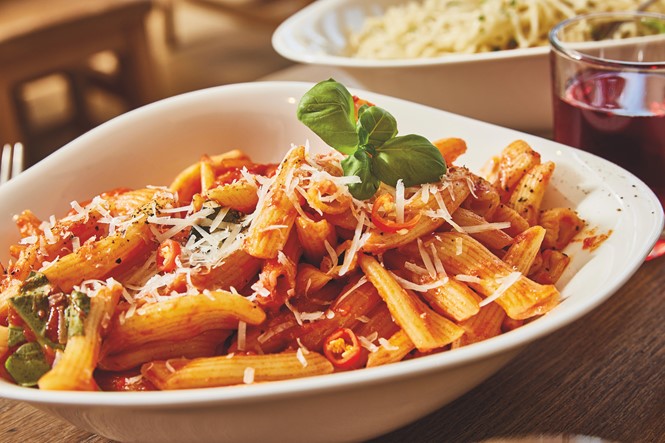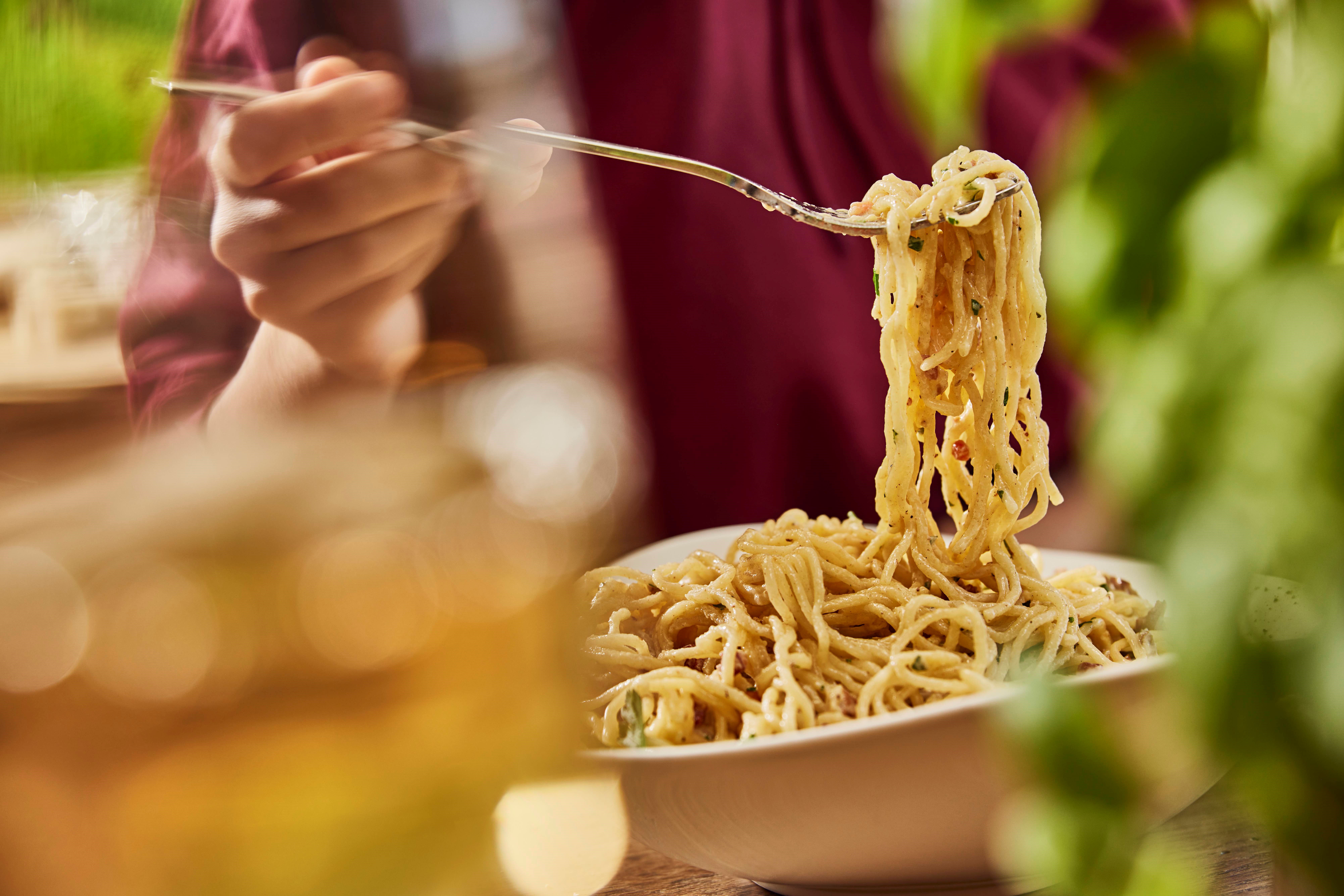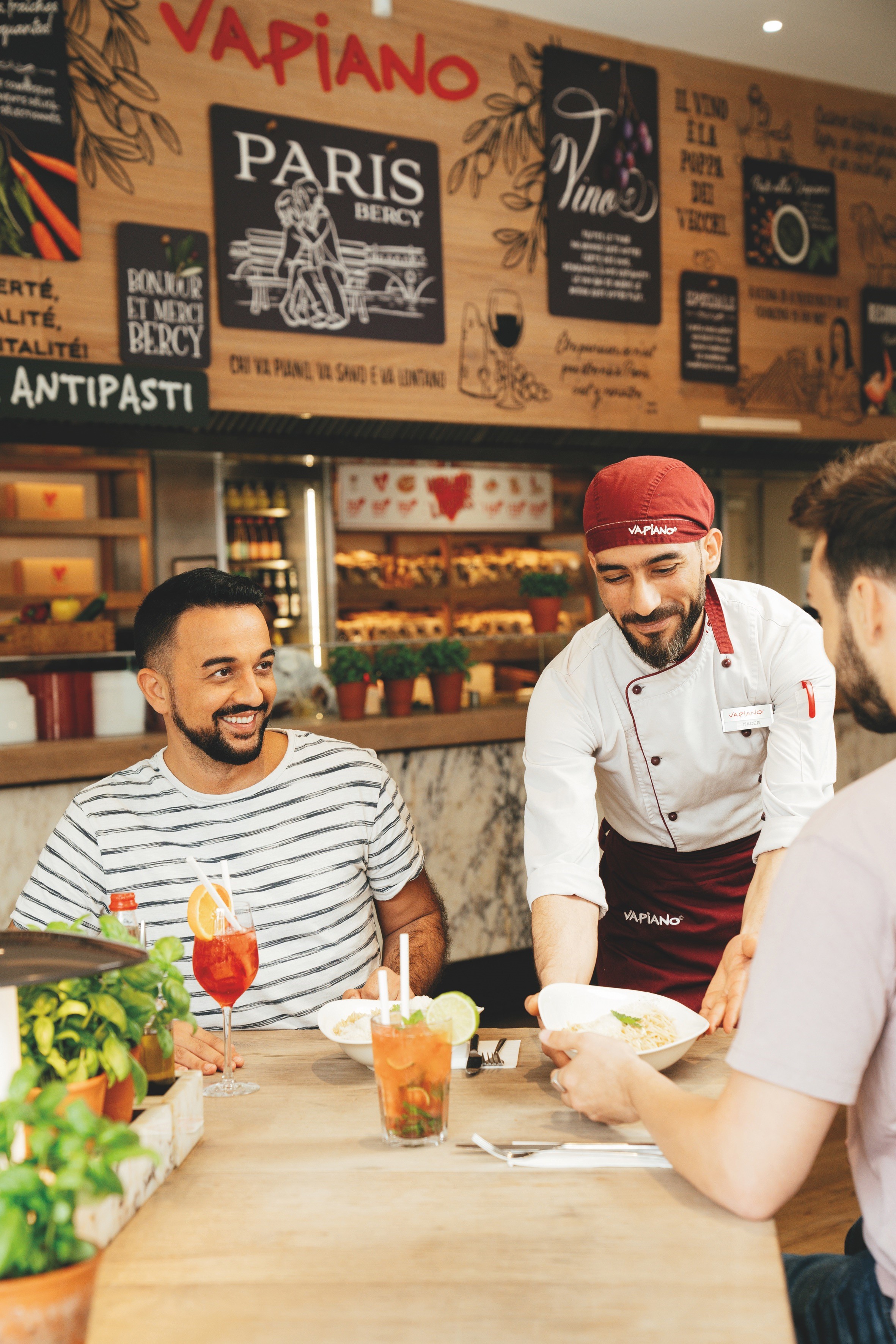What’s on the menu?

Prior to the appointment of a new CEO two years ago, Italian-inspired German restaurant chain Vapiano stood on the brink of collapse. How could a customer experience rebrand save the company? Jack Cousins reports.
Groups of couples, friends and families embroiled in booming conversations are sporadically tended to by waiters, frantically crisscrossing each other from counter to table with enormous bowlfuls of hearty pasta. It’s a Monday night at fast casual food chain Vapiano in central London and the atmosphere is raucous.
There are as many as four Vapianos to choose from throughout the city, but with this particular restaurant being the first to reach the UK’s shores in 2008, and it being generally recognised by management as amongst its top performing globally, the Great Portland Street branch was too tempting to ignore this evening.
The explosive atmosphere of high demand is mediated by a comfortable, modern decor observed throughout the two-storey outlet along with the enticing smells unique to traditional Italian dishes; garlic, basil, fresh tomatoes etc. While it may seem random and at times disorganised, the Vapiano customer experience has been scrupulously curated from the higher echelons of the business. Indeed, its very success depends on the popularity of this highly differentiated brand experience.
When a customer walks into a Vapiano, they are greeted by a front of house staff member – colloquially referred to here as ‘Vapianisti’ – before being seated. From the moment of sitting down the food order can be made via a QR code found stuck to the table or from a neat, easily navigable app. Dishes may be quickly modified depending on personal preference before the payment is made online then and there. The chefs can be seen cooking each and every meal ordered behind a huge counter which surrounds approximately half the room before they are quickly rushed over by the waiting staff.

However, this ‘Guest Journey 3.0’ is still a relatively new brand experience for fans of the restaurant chain. Up until recently, the model relied on the use of RFID cards which were handed out on entrance. Customers would queue in front of the open counters and scan the card after the chef had cooked their meal in front of them before paying as they left.
“It was pretty cool at the time,” says Alan Laughlin, Vapiano’s CEO, though he admits there were many flaws with the historic service model. For instance, while queuing in front of a chef preparing the meal brought great theatre, it also meant that groups of people who had arrived together were scattered and would receive their food at different times. This set up also made it possible to leave the restaurant without scanning your card and paying on exit if you were quick enough. In 2019, the final year of the previous customer experience, it was estimated £140,000 worth of Vapiano sales went unpaid for in the UK alone.

The Guest Journey 3.0, where all sales are accounted for, was sorely needed after the company sank into bankruptcy in March 2020. The undoubted hinderance of Covid-19 and global lockdown restrictions hadn’t helped but Vapiano had been on the rocks for some time. Its share price plummeted 75% during 2019 and a year later, the precarious Vapiano turned to Laughlin, who had extensive experience from his time as president of Burger King in central Europe, to steady the ship.
“We had 236 restaurants [globally] in 2019 before bankruptcy,” explains Laughlin. “After the fallout there were 159 in June when I was asked if I wanted to come tackle this project. We grew that to about 180 at the end of the year. In 2020, we had what we called an ‘amicable recovery agreement’ with our franchisees, allowing them to have a reduction in royalties to even 0% to get started. We're in it for the long haul, not to make money during tough times.”
UK chains, unlike the franchised Vapianos around the rest of the world, operate as an equity-owned business. This means restaurants like Great Portland Street are designed as centres of excellence where the Vapiano hierarchy is free to experiment and foster innovation. The new Guest Journey, which is recognised to produce stronger sales, is only fully operational in the UK and the Netherlands, while testing is underway in parts of France and native Germany.
This big leap forward meant other aspects of Vapiano’s brand identity had to catch up. A refreshed menu design, brimming with colourful illustrations of basil leaves, pizza and various pasta types that highlighted the core dishes and the possibility of personalisation, followed suit. Laughlin’s aim of re-establishing what the Vapiano brand means has not gone unnoticed by British consumers, demonstrated by an increase in like-for-like sales compared to 2019. He hopes this will lead to more franchisees adopting the new system.

“There are some that prefer the traditional guest journey,” says Laughlin. “We just want to convince them with the data we're seeing. When people have the time to order digitally, in kiosks or on app, they see what they can add to [their dish]. The pasta chef can't upsell you, so that was a digital opportunity and we've taken advantage of that.”
From the depths of administration and being on the brink of collapse two years ago, it appears Vapiano has stabilised itself to fight another day. That is not to say the company is now operating in a position of power, however, and many daunting challenges wait on the horizon. From once building imperious 7,000 square foot restaurants, a smaller footprint of around 2,000 square feet is set to become the norm for all new Vapianos due to the excessive labour and building costs involved as the world economy shrinks.

Laughlin adds, “2022 is really the year of resetting with the franchisees, really understanding where they’re at in their business after almost a full year of operations and then really pushing towards growth in 2023 and after.”
Of course, if anything is to cause a stir of optimism, it is the scene inside Vapiano’s Great Portland Street restaurant on this Monday night. Replete with cheerful customers and busy staff, the Guest Journey 3.0 demonstrates how a good, old-fashioned rebrand can turn around the fortunes of a company, even in the darkest of times.












